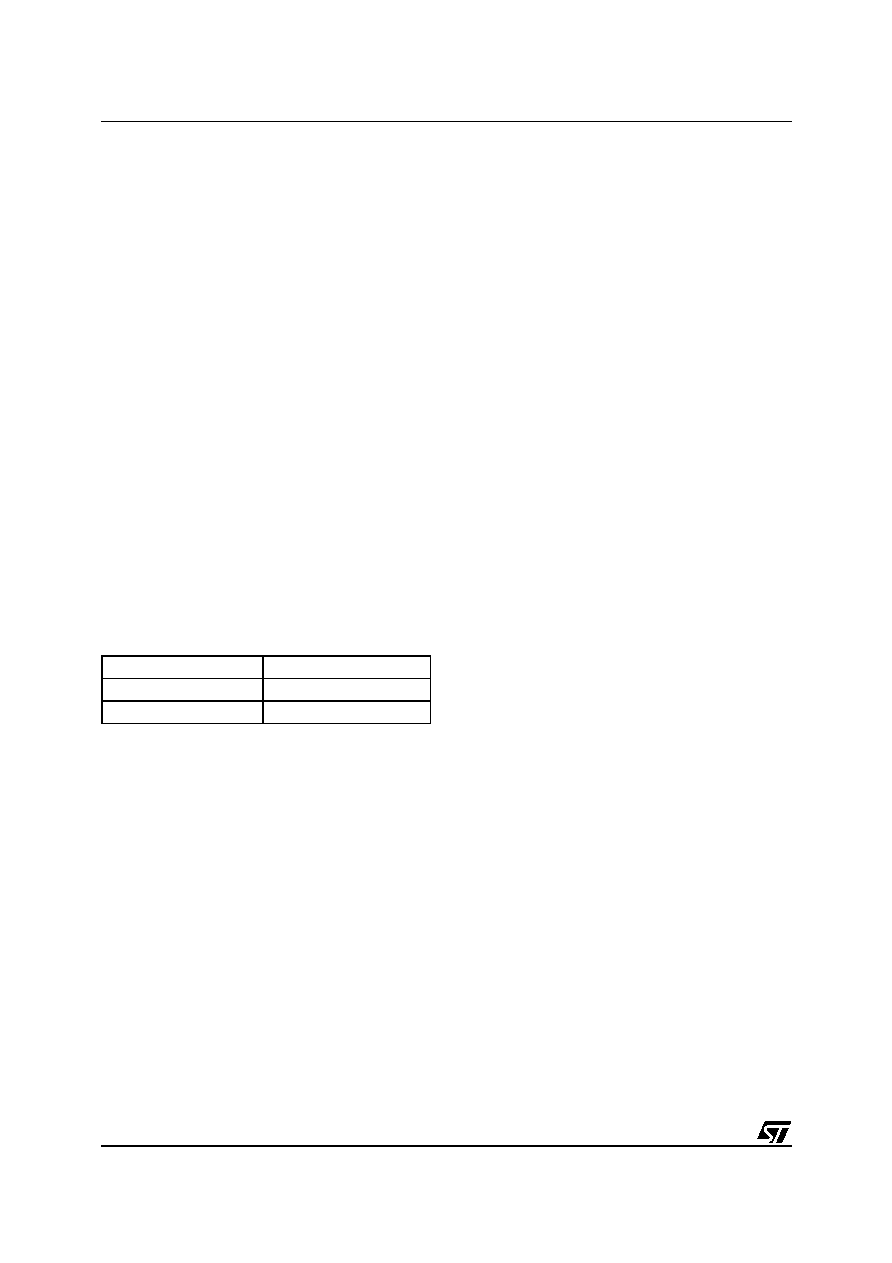- 您現(xiàn)在的位置:買賣IC網(wǎng) > PDF目錄98145 > ST7263BK1B/XXX (STMICROELECTRONICS) 8-BIT, MROM, 8 MHz, MICROCONTROLLER, PDIP32 PDF資料下載
參數(shù)資料
| 型號(hào): | ST7263BK1B/XXX |
| 廠商: | STMICROELECTRONICS |
| 元件分類: | 微控制器/微處理器 |
| 英文描述: | 8-BIT, MROM, 8 MHz, MICROCONTROLLER, PDIP32 |
| 封裝: | 0.400 INCH, LEAD FREE, SHRINK, PLASTIC, DIP-32 |
| 文件頁數(shù): | 62/140頁 |
| 文件大小: | 1423K |
| 代理商: | ST7263BK1B/XXX |
第1頁第2頁第3頁第4頁第5頁第6頁第7頁第8頁第9頁第10頁第11頁第12頁第13頁第14頁第15頁第16頁第17頁第18頁第19頁第20頁第21頁第22頁第23頁第24頁第25頁第26頁第27頁第28頁第29頁第30頁第31頁第32頁第33頁第34頁第35頁第36頁第37頁第38頁第39頁第40頁第41頁第42頁第43頁第44頁第45頁第46頁第47頁第48頁第49頁第50頁第51頁第52頁第53頁第54頁第55頁第56頁第57頁第58頁第59頁第60頁第61頁當(dāng)前第62頁第63頁第64頁第65頁第66頁第67頁第68頁第69頁第70頁第71頁第72頁第73頁第74頁第75頁第76頁第77頁第78頁第79頁第80頁第81頁第82頁第83頁第84頁第85頁第86頁第87頁第88頁第89頁第90頁第91頁第92頁第93頁第94頁第95頁第96頁第97頁第98頁第99頁第100頁第101頁第102頁第103頁第104頁第105頁第106頁第107頁第108頁第109頁第110頁第111頁第112頁第113頁第114頁第115頁第116頁第117頁第118頁第119頁第120頁第121頁第122頁第123頁第124頁第125頁第126頁第127頁第128頁第129頁第130頁第131頁第132頁第133頁第134頁第135頁第136頁第137頁第138頁第139頁第140頁

ST7263B
28/140
9 I/O PORTS
9.1 Introduction
The I/O ports offer different functional modes:
– Transfer of data through digital inputs and out-
puts and for specific pins
– Analog signal input (ADC)
– Alternate signal input/output for the on-chip pe-
ripherals
– External interrupt generation
An I/O port consists of up to 8 pins. Each pin can
be programmed independently as a digital input
(with or without interrupt generation) or a digital
output.
9.2 Functional description
Each port is associated to 2 main registers:
– Data Register (DR)
– Data Direction Register (DDR)
Each I/O pin may be programmed using the corre-
sponding register bits in DDR register: bit X corre-
sponding to pin X of the port. The same corre-
spondence is used for the DR register.
Table 9. I/O Pin Functions
Input Modes
The input configuration is selected by clearing the
corresponding DDR register bit.
In this case, reading the DR register returns the
digital value applied to the external I/O pin.
Note 1: All the inputs are triggered by a Schmitt
trigger.
Note 2: When switching from input mode to output
mode, the DR register should be written first to
output the correct value as soon as the port is con-
figured as an output.
Interrupt function
When an I/O is configured as an Input with Inter-
rupt, an event on this I/O can generate an external
Interrupt request to the CPU. The interrupt sensi-
tivity is given independently according to the de-
scription mentioned in the ITRFRE interrupt regis-
ter.
Each pin can independently generate an Interrupt
request.
Each external interrupt vector is linked to a dedi-
cated group of I/O port pins (see Interrupts sec-
tion). If more than one input pin is selected simul-
taneously as an interrupt source, this is logically
ORed. For this reason if one of the interrupt pins is
tied low, the other ones are masked.
Output Mode
The pin is configured in output mode by setting the
corresponding DDR register bit (see Table 7).
In this mode, writing “0” or “1” to the DR register
applies this digital value to the I/O pin through the
latch. Therefore, the previously saved value is re-
stored when the DR register is read.
Note: The interrupt function is disabled in this
mode.
Digital Alternate Function
When an on-chip peripheral is configured to use a
pin, the alternate function is automatically select-
ed. This alternate function takes priority over
standard I/O programming. When the signal is
coming from an on-chip peripheral, the I/O pin is
automatically configured in output mode (push-pull
or open drain according to the peripheral).
When the signal is going to an on-chip peripheral,
the I/O pin has to be configured in input mode. In
this case, the pin’s state is also digitally readable
by addressing the DR register.
Notes:
1. Input pull-up configuration can cause an unex-
pected value at the input of the alternate peripher-
al input.
2. When the on-chip peripheral uses a pin as input
and output, this pin must be configured as an input
(DDR = 0).
Warning: The alternate function must not be acti-
vated as long as the pin is configured as an input
with interrupt in order to avoid generating spurious
interrupts.
DDR
MODE
0
Input
1
Output
相關(guān)PDF資料 |
PDF描述 |
|---|---|
| ST72652AR4T1/XXX | 8-BIT, MROM, MICROCONTROLLER, PQFP64 |
| ST72651AR6T1E/XXX | 8-BIT, MROM, MICROCONTROLLER, PQFP64 |
| ST72652C4T1/XXX | 8-BIT, MROM, MICROCONTROLLER, PQFP48 |
| ST7267R8T1L/XXX | 16-BIT, MROM, 30 MHz, RISC MICROCONTROLLER, PQFP64 |
| ST7267C8T1/XXX | 16-BIT, MROM, 30 MHz, RISC MICROCONTROLLER, PQFP48 |
相關(guān)代理商/技術(shù)參數(shù) |
參數(shù)描述 |
|---|---|
| ST7263-EMU2 | 功能描述:仿真器/模擬器 ST7 Emulator Board RoHS:否 制造商:Blackhawk 產(chǎn)品:System Trace Emulators 工具用于評(píng)估:C6000, C5000, C2000, OMAP, DAVINCI, SITARA, TMS470, TMS570, ARM 7/9, ARM Cortex A8/R4/M3 用于:XDS560v2 |
| ST7265X-EVAL/MS | 制造商:STMicroelectronics 功能描述:ST6 EVAL BD - Bulk |
| ST7265X-EVAL/PFD | 制造商:STMicroelectronics 功能描述:USB FLASH EVAL - Bulk |
| ST7266 | 制造商:6940 功能描述:ST7266 |
| ST7267C8T1L | 制造商:STMicroelectronics 功能描述: |
發(fā)布緊急采購,3分鐘左右您將得到回復(fù)。